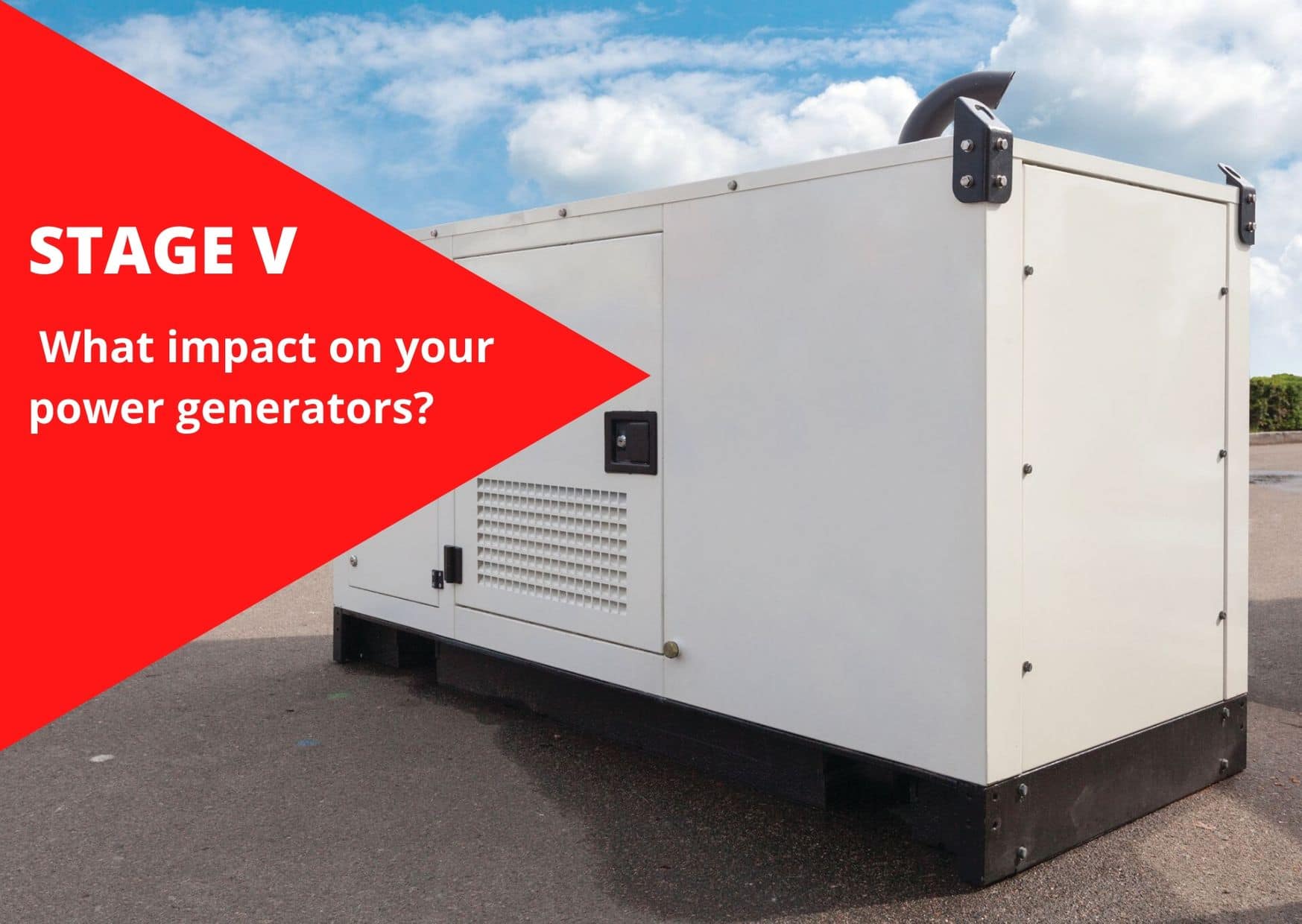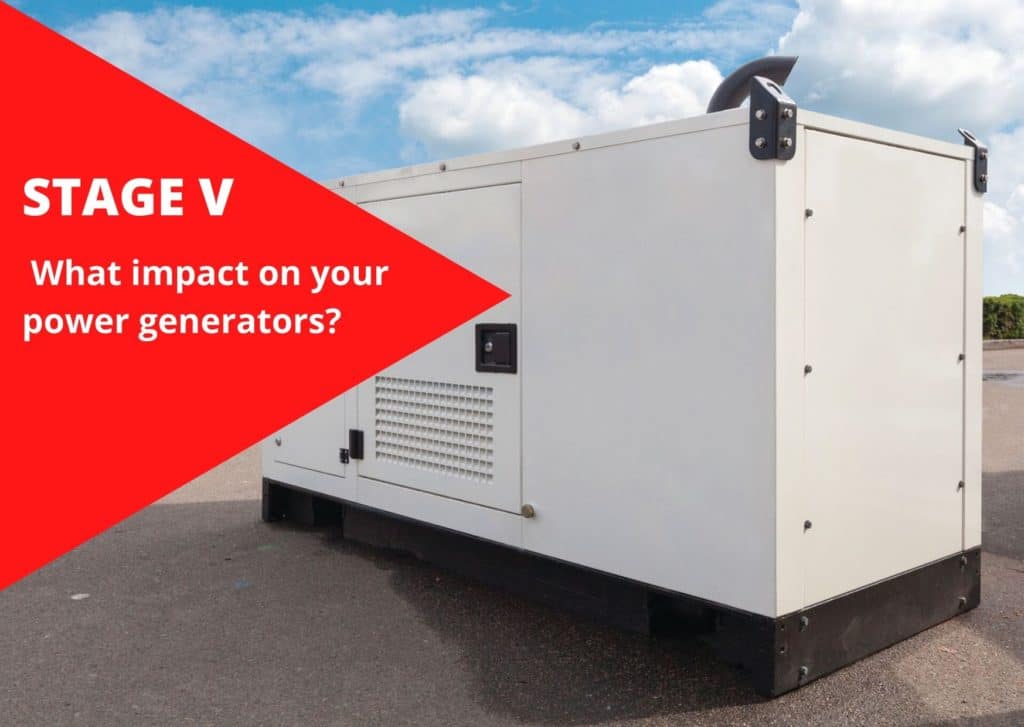
17 Apr Stage V: what are the implications on power generators?
Like the previous regulations, the “Stage V” or “Stage 5”, is aimed at reducing pollutant discharges from non-road mobile vehicles (agricultural and industrial equipment) but also power generator engines. An anti-polluting regulation to be applied and for which KVA Applications finds technical solutions.
Since January 1, 2020, all engines are concerned
In order to comply with regulations, new engines manufactured by manufacturers must now meet Stage V requirements for all engine powers. At the beginning of 2019, this applied to powers from 0 to 56 kW and above 130 kW and in 2020 this also includes intermediate engines, i.e. with a power between 56 and 130 kW.
While in Europe we talk about the Stage standard, in the United States it is the Tier certification. However, these two regulations are similar, i.e. 2 major objectives:

- Limiting the permissible values of fine particle emissions and thus reducing the mass of particles emitted and their number.
- To reduce the amount of toxic gases emitted, especially nitrogen dioxide.
.
Who is concerned by the Stage V regulation?
It’s simple… all users of mobile generators are committed to respecting this regulation, namely rental companies, some maintenance workers, and GE users on construction sites in particular.
The challenge: to protect the environment, meet customer expectations and stay competitive…
More than a normative formality, it is a challenge for manufacturers. It is a challenge for manufacturers to participate in the preservation of the environment, while continuing to meet their customers’ expectations by producing reliable, high-performance equipment without having to raise prices.
These anti-pollution standards encourage more and more innovation and technical requirements with advanced features to offer clean products.
Power generator Engine : they are solutions
The mechanical components that contribute to Stage V compliance for a generator set focus mainly on the exhaust parts.
Technical solutions in response to the 2 objectives of the Stage V standard, namely :
- Reduce the toxicity of gases and their quantity
2 systems can be used for generator engines :
– The EGR valve
It will activate when the engine is running at low speed in order to re-inject the partially burnt gases. It is when the engine is a little hot and running at low load that its intervention is necessary.
– The catalytic converter
It will transform a large part of the harmful gases (carbon monoxide, unburned hydrocarbons, nitrogen oxides) into harmless gases (water, carbon dioxide and nitrogen dioxide). It is around 400°C that its operation is optimal, i.e. with a hot and heavily loaded engine.
- Reducing particulate emissions
Stage V engines must be equipped with a Particle Filter (PAF). Its purpose is to capture particles suspended in the exhaust gases and form a layer of soot. This deposit is burned off when the engine gets hot enough and therefore when the exhaust gases are hot enough.
The load bank to test, ballast and maintain your equipment
The major problem is in the case of a low load operation of your installations. Indeed, at low power, the engine will produce white smoke and a lot of polluting emissions, because it does not heat sufficiently and the diesel only burns partially.
This effect is of course completely counterproductive compared to the Stage V standard. Moreover, it will damage the components that are intended to reduce pollution, not to mention engine problems such as wet stacking, wear, fouling, …
> A load bank, what’s that for?
Generators are not designed to operate at low loads.
As you know, at low load profile, there are impacts on the power generator.
But there are solutions.
Often the energy requirements vary and the gap between the power demand and the nominal operating power of the motor has to be bridged. And this is where the use of a load bank and thus a test / trial on your generator set comes into play.
Your responsibility is to ensure that the generating sets meet the requirements of the Stage V standard, set at European level.
Yes, your solution is the installation of a test bench to test, maintain and ballast your equipment. The KVA Applications teams are at your disposal to guarantee not only compliance with the standards, but also the performance and efficiency of your equipment.
Do you have any questions on Stage V regulation ? Need a quote for a loadbank project? Please contact us!





